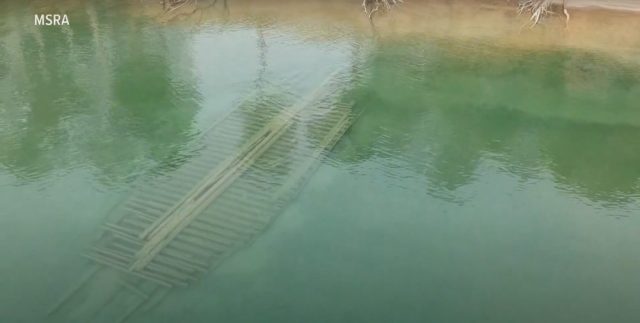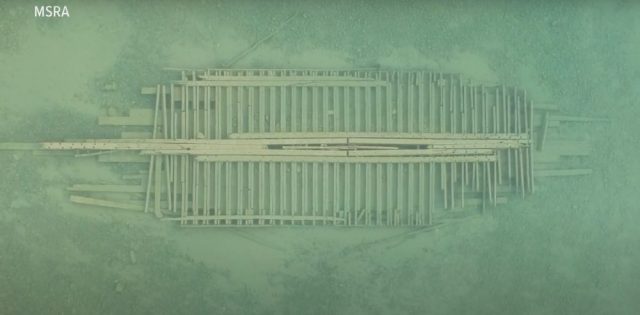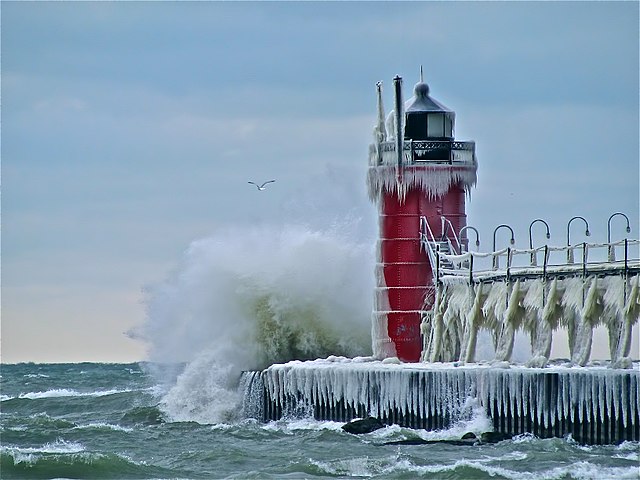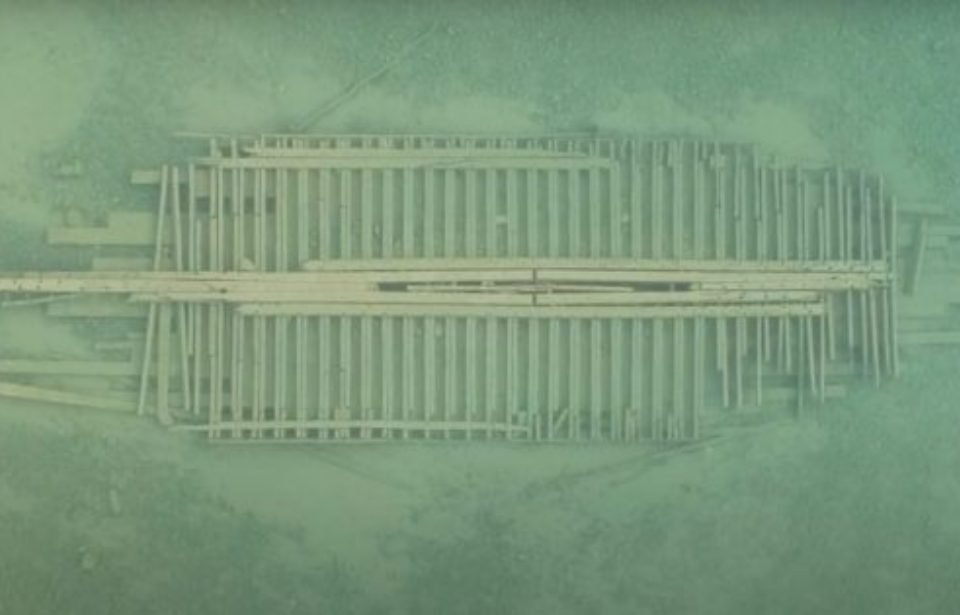Beneath the waters of Lake Michigan sit the remains of approximately 20 shipwrecks. While the majority are only accessible to those willing to dive beneath the waves, there are a handful that can be seen from the shoreline. One such sunken ship recently decided it no longer wished to remain at its location, “setting sail” on an unprecedented journey.
The schooner’s final voyage
The City of Green Bay schooner spent two years on the open ocean before returning to the Great Lakes region. In late September 1887, it set out from Escanaba, Michigan, with 675 tons of iron ore with another schooner, the Havana. Both were traveling to Chicago, but a nasty storm made it so that the City of Green Bay never reached its destination.
The evening of October 1, 1887, saw the development of a fierce northwesterly gale, which failed to relent as the night progressed. Fearing the worst, Captain P.W. Costello had his crew of five fashion a makeshift raft out of ladders and other material before letting go the schooner’s anchors and setting adrift.

The following morning, residents along the shore of South Haven, Michigan, saw a distress signal coming from the ship and contacted authorities. When the rescue team arrived on scene, they found the schooner had broken in two amidships amid the weight of its distress.
With each wave, the vessel continued to break and be swept away. Two masts collapsed, dragging three crewmen with them, never to be seen again. The remainder of the crew clung to the third, but despite the rescue crew’s best efforts, only one survived.
The ship “sails” again
For over a century, the City of Green Bay had found a resting place in Deerlick Creek, just off the South Haven shore. From the vantage point, beachgoers were able to view the wreckage without any need of special equipment.
In May 2021, an anonymous homeowner residing along the Lake Michigan shore looked out her window and noticed what appeared to be a shipwreck some 50 feet out. Aware the City of Green Bay was located in nearby Deerlick Creek, she contacted the Michigan Maritime Museum to report her discovery.

The museum’s Director of Education and Administration reached out to the Michigan Shipwreck Research Association (MSRA) with the news. Curious, its director, Valerie van Heest, and a colleague, Craig Rich, went to investigate. Using pictures taken with a drone, van Heest and Rich compared the newly-discovered wreck to old photographs and drawings of the City of Green Bay.
Their conclusion: the schooner had made an unprecedented voyage.
Erosion and Mother Nature are likely at fault
According to van Heest, the schooner’s movement is likely due to a combination of erosion and Mother Nature. The previous year saw higher than normal water levels, which contributed to erosion along the eastern coast of Lake Michigan. That, combined with a storm similar to that seen in 1887, likely churned up the ship in late 2020 or early 2021 and deposited it at its current location.

Erosion is also to blame for the fact the City of Green Bay is no longer easily accessible to the public. Fallen trees and erosion along the shoreline have made it difficult and potentially dangerous for someone to access the wreck by land. This means access is largely limited to the water, meaning a boat is needed.
The exact location is not currently being disclosed as a result of the public’s inability to safely access it.
The schooner will likely “set sail” yet again
As the City of Green Bay is not embedded at the bottom of the lakebed, van Heest believes the schooner will likely migrate to a new location in the future. While there is the possibility erosion could once again bury the wreck, chances are another storm will set it adrift somewhere new.
More from us: Giant Tortoise Revealed As Species Long Thought To Be Extinct
The Michigan Shipwreck Research Association plans to keep a watchful eye on the schooner’s wreckage. They plan to follow its progress, should the sunken ship decide to make yet another voyage.
